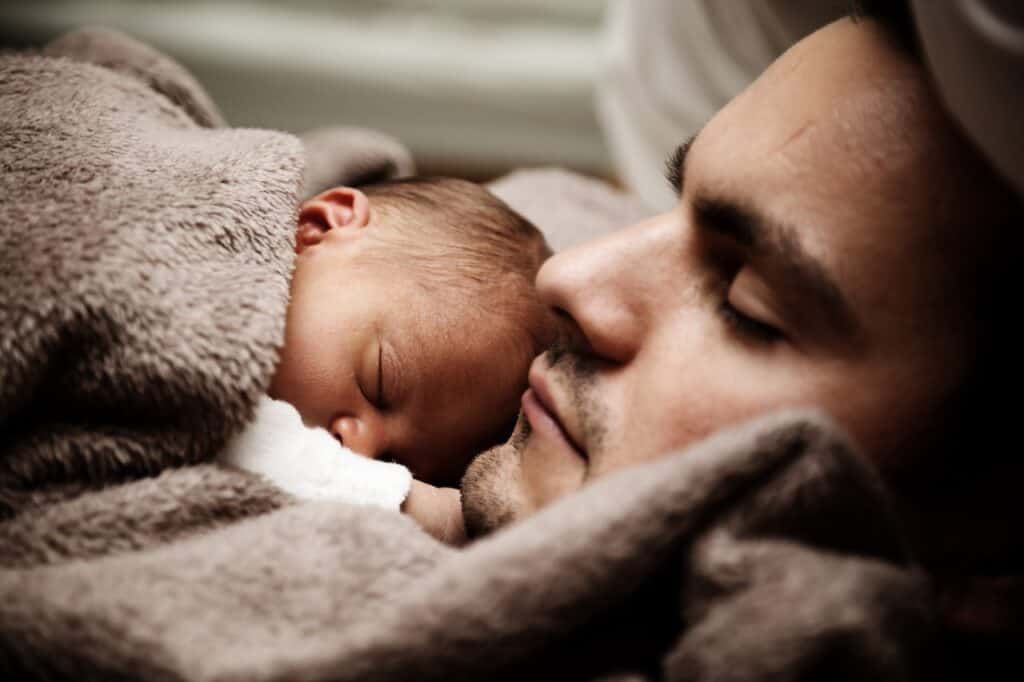Welcoming a new addition to your family is a joyful and transformative experience. As your baby grows, so do their needs, and one of the significant transitions you’ll encounter is converting their Delta crib into a toddler bed. This pivotal step not only marks a milestone in your child’s development but also plays a crucial role in their safety and comfort. Let’s have a look on how to convert delta crib to toddler bed.
Step I: Gather Your Tools and Materials
Before you start converting your Delta crib into a toddler bed, it’s essential to gather the necessary tools and materials. Having everything ready in advance will streamline the process and help you avoid interruptions. Here is a brief glance of what you’ll need:
- Phillips head screwdriver
- Allen wrench (included with your crib)
- Safety glasses
- Pliers
Step II. Read the Manual
The second step in converting your Delta crib is to read the crib’s manual. While this guide provides general instructions, it’s essential to consult the manual for your specific crib model. The manual will contain model-specific details, safety guidelines, and any additional information that pertains to your crib. If you can’t locate your manual, don’t worry; you can often find it online on the manufacturer’s website.
Step III. Lower the Mattress Support
Ensuring your child’s safety is paramount during this transition. Begin by lowering the mattress support to its lowest position. This step is crucial as it prevents your toddler from climbing out of the bed, reducing the risk of accidents.
Lowering the mattress support involves adjusting the platform or frame that holds the mattress in place. Most cribs have multiple height settings, allowing you to lower the mattress as your child grows and becomes more mobile. Lowering it to the lowest setting is essential to ensure that your child cannot easily climb out of the bed.
To lower the mattress support:
- Remove the Mattress: Start by taking the mattress out of the crib. Set it aside in a safe place to make room for the conversion.
- Locate the Adjusting Mechanism: Look for the mechanism that allows you to adjust the mattress height. This mechanism varies from crib to crib but is typically located at each corner of the crib or along the sides.
- Adjust to the Lowest Position: Using the provided instructions in your crib’s manual, lower the mattress support to the lowest position. This usually involves either moving a platform or changing the height of the mattress support frame.
- Double-Check for Stability: Once you’ve adjusted the mattress support, ensure that it is securely in place and that there are no loose or missing screws or bolts. A stable mattress support is crucial for your child’s safety.
Step IV. Remove the Front Crib Panel
Now, let’s dive into the actual process of converting your Delta crib into a toddler bed:
- Remove the Mattress
Before you begin the conversion, remove the crib mattress and set it aside in a safe location. This step will give you easier access to the crib’s components and make the conversion process smoother.
- Locate and Remove Screws
On the front rail of the crib, you’ll find screws that secure it to the crib’s legs. These screws are typically located on the top and bottom of the front rail. Use your Phillips head screwdriver to remove these screws. Be sure to keep them in a safe place, as you may need them later if you decide to convert the toddler bed back into a crib.
- Lift Off the Front Rail
With the screws removed, gently lift the front rail off of the legs of the crib. This step effectively removes the front panel of the crib and creates an open side, allowing your child to access the bed easily.
- Remove Stabilizer Bar
Turn your attention to the back of the crib. Here, you’ll find screws that secure the stabilizer bar to the legs of the crib. To remove these screws, use the Allen wrench that came with your crib. Carefully take the stabilizer bar off the crib.
- Repeat for the Other Side of the crib
To ensure symmetry and stability, repeat steps 2-4 on the other side of the crib. This ensures that both sides of the crib are now open, creating a clear entry and exit point for your child.
Congratulations! Your Delta crib has now been successfully converted into a toddler bed. The following steps will help you ensure the bed’s stability and safety.
Step V. Double-Check for Stability
Now that you’ve completed the conversion, it’s essential to double-check that all screws and bolts are securely tightened. A stable toddler bed is crucial for your child’s safety, so take your time to ensure everything is in place.
Why Stability Matters
A stable toddler bed provides a secure sleeping environment for your child. It reduces the risk of accidents, such as the bed collapsing or becoming wobbly during use. Ensuring the stability of the bed is a fundamental safety precaution that should not be overlooked.
To double-check for stability:
- Inspect All Connections: Carefully inspect all the connections, including screws, bolts, and any other fasteners used during the conversion. Make sure they are tight and secure.
- Reinforce If Necessary: If you notice any loose or wobbly parts, use your tools to reinforce the connections. Tighten any screws or bolts that may have loosened during the conversion process.
- Test the Bed: Gently shake the toddler bed to test its stability. It should not wobble or make any unusual noises. If it does, identify the source of the instability and address it promptly.
- Check for Sharp Edges or Protrusions: Examine the bed for any sharp edges or protruding parts that could pose a risk to your child. If you find any, sand them down or cover them with protective caps.
By taking these steps, you can ensure that your toddler’s bed is stable and safe for use.
Step VI. Install the Toddler Bed Rail (if included)
Many Delta cribs come with a toddler bed rail as part of a conversion kit. If your crib includes one, follow the manufacturer’s instructions to attach it securely to the open side of the crib. This rail serves as an added safety measure to prevent your child from rolling out of bed during the night.
Importance of a Toddler Bed Rail
Toddler bed rails provide an extra layer of security for your child as they transition from a crib to a bed. They act as a guardrail, reducing the risk of falls during the night, especially if your child is an active sleeper.
To install the toddler bed rail:
- Follow Manufacturer’s Instructions: Refer to the instructions provided in the toddler bed rail kit. These instructions are specific to the rail and will guide you through the installation process.
- Attach Securely: Ensure that the bed rail is securely attached to the open side of the toddler bed. Double-check that all fasteners are tight and that the rail is level and stable.
- Test for Stability: Give the bed rail a gentle push to ensure it is firmly in place. It should not wobble or come loose.
- Explain to Your Child: If your child is old enough to understand, explain the purpose of the bed rail. Let them know that it’s there to keep them safe and prevent them from accidentally rolling out of bed.
Installing a toddler bed rail is an extra precaution that can provide peace of mind for parents and help your child feel secure in their new sleeping arrangement.
Read About: What to Do When Baby is Too Big for Bassinet but Not Ready for Crib
Step VII. Add Bedding
With the conversion complete and the bed securely assembled, it’s time to make it comfortable for your toddler. Here are some tips for adding bedding:
Choosing the Right Bedding
Selecting appropriate bedding for your toddler is essential for their comfort and safety. Toddler-sized bedding is designed to fit the smaller dimensions of a toddler bed, ensuring a snug and safe fit. When choosing bedding, consider the following:
- Toddler-Sized Sheets: Invest in fitted sheets specifically designed for toddler beds. These sheets are sized to fit the mattress snugly, reducing the risk of entanglement.
- Avoid Loose Bedding: To minimize the risk of suffocation, avoid using heavy blankets or quilts in the toddler bed. Instead, opt for lightweight blankets or quilts that are designed for toddlers. Never place stuffed animals, pillows, or loose bedding in the crib while your child sleeps.
- Make it Inviting: Let your child participate in choosing their bedding. Select fun, colorful patterns or bedding featuring their favorite characters to make the bed inviting and exciting for them.
To add bedding to the toddler bed:
- Fitted Sheet: Start by placing a fitted sheet on the mattress. Ensure that it fits securely and does not come loose.
- Blanket or Quilt: If the room temperature requires extra warmth, add a lightweight toddler-sized blanket or quilt. Tuck it in securely around the mattress to prevent it from moving during the night.
- Pillows: While it’s generally recommended to avoid pillows for very young toddlers, you can introduce a toddler-sized pillow once your child is old enough and demonstrates the ability to move and reposition themselves independently during sleep. Ensure that the pillow is appropriately sized and designed for toddlers.
Remember that safety is paramount when it comes to bedding. Always follow the manufacturer’s guidelines for safe bedding practices to reduce the risk of Sudden Infant Death Syndrome (SIDS) and other sleep-related accidents.

Step VIII. Childproof the Room
Ensuring your child’s safety extends beyond the toddler bed itself. Childproofing the room is crucial to create a secure sleeping environment:
Removing Hazards
Before your child starts using the toddler bed, it’s essential to identify and remove potential hazards in the room. Here are some key steps to take:
- Cords and Curtains: Secure or tie up any cords from blinds or curtains that are within your child’s reach. These cords can pose a strangulation risk.
- Small Objects: Remove small objects, such as coins, toys, or any other small items that your child might pick up and put in their mouth.
- Sharp Items: Check for any sharp or hazardous items within your child’s reach. Secure or remove these items to prevent accidents.
Securing Furniture
Furniture can pose a significant risk to toddlers who may attempt to climb or pull on it. To ensure your child’s safety:
- Anchor Heavy Furniture: Use wall anchors to secure heavy furniture, such as dressers, bookshelves, and TV stands, to the wall. This prevents the furniture from tipping over if your child tries to climb it.
- Secure Cabinets and Drawers: Install childproof latches on cabinets and drawers to prevent your child from accessing potentially hazardous items, such as cleaning supplies or sharp objects.
Use Outlet Covers
Electrical outlets can be tempting for curious toddlers. To protect your child from electrical hazards:
- Outlet Covers: Install outlet covers or safety plugs in all accessible electrical outlets to prevent your child from inserting objects into them.

Safety Gates
If necessary, consider using safety gates to restrict your child’s access to certain areas of the house, especially areas that may contain hazards or that you want to keep off-limits during the night.
By thoroughly childproofing the room, you can create a safe sleeping environment for your toddler, reducing the risk of accidents and ensuring their well-being.
Step IX. Introduce Your Child to the Toddler Bed
With the toddler bed set up and the room childproofed, it’s time to introduce your child to their new sleeping arrangement. Here are some tips to make the transition positive and exciting:
Familiar Bedtime Routine
Maintain your usual bedtime routine to provide comfort and consistency for your child. A familiar routine can help signal to your child that it’s time to sleep and can ease the transition to the new bed.
Positive Reinforcement
Praise and encourage your child for being a “big kid” and sleeping in their new bed. Positive reinforcement can help boost your child’s confidence and make them feel proud of their accomplishment.
Comfort Items
Allow your child to bring a favorite stuffed animal or blanket to their new bed for added comfort. Having a familiar and comforting item can make the new sleeping arrangement feel more secure.
Stay Consistent
Be patient and consistent with the transition. It’s normal for your child to take some time to adjust to the change. Avoid going back to the crib once you’ve made the switch, as this can confuse your child. Consistency is key to helping them adapt to the new sleeping arrangement.
Reassurance
If your child wakes up during the night or is apprehensive about the new bed, offer reassurance and comfort. Sometimes, simply being present and offering a comforting touch or soothing words can help your child settle back to sleep.
Conclusion
Transforming your Delta crib into a toddler bed marks a crucial milestone in your child’s growth journey. This undertaking demands meticulous planning, a keen focus on safety measures, and a good deal of patience. By adhering to the steps detailed in this manual and giving utmost consideration to your child’s well-being and ease, you can guarantee a seamless transition. Keep in mind that each child is distinctive, and it’s entirely typical for them to require some time to adapt to this alteration. Exercise patience and commemorate this thrilling achievement as a team.
Additional Tips and Troubleshooting (Optional)
While the steps mentioned above cover the basics of “how to convert delta crib to toddler bed”, there may be additional considerations depending on your specific crib model or your child’s unique needs. Here are some extra tips and potential challenges you might encounter:
Additional Tips for a Smooth Transition
Bedtime Stories
Read bedtime stories in the toddler bed to create positive associations with the new sleeping arrangement. Reading together can be a calming and enjoyable part of your bedtime routine.
Nightlights
Consider using a nightlight in the room to provide comfort if your child is afraid of the dark. A soft, soothing nightlight can help your child feel secure during the night.
Consistency is Key
Maintain a consistent sleep schedule to help your child adapt to the new routine. Consistency with bedtime and wake-up times can regulate your child’s sleep patterns.
Troubleshooting Common Challenges
Resistance to Change
If your child resists sleeping in the toddler bed, be patient and gradually extend the time they spend in it during daytime naps before transitioning to nighttime sleep. This gradual approach can help your child become more accustomed to the new bed.
Frequent Waking
If your child wakes up frequently, offer comfort and reassurance. Consider whether teething, illness, or other factors might be contributing to disrupted sleep. Addressing the underlying issue can help improve sleep quality.
Rolling Out of Bed
If your child tends to roll out of bed, ensure the toddler bed rail is securely attached. Additionally, place pillows or soft cushions on the floor beside the bed to cushion any falls. Safety precautions like these can prevent injuries.
Maintaining Consistency
Consistency is essential during the transition period. Avoid going back to the crib once you’ve made the switch, as this can confuse your child. Stick to the new routine to help your child adapt to the toddler bed.







